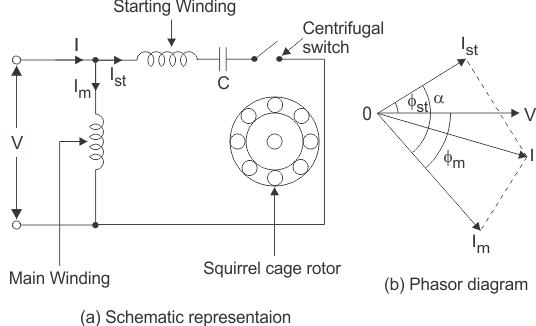I have acquired an Elliott Progress No.1 pillar drill with a Crompton Parkinson motor. It must date from the 1960s. The motor worked fine when I first acquired it. The rest of the drill was in a bad state, so I stripped and restored it and gave the motor a good clean. It's single phase with two windings, a centrifugal start switch, and a start capacitor. Once reassembled, I wired it back up the way it was when I dismantled it, and switched it on. The motor emitted a loud buzzing sound but did not move.
The bearings are good, there are no obstructions, and the spindle turns smoothly by hand. One thing I did notice was that with the power on the spindle locked – I couldn’t turn it in either direction until I cut the power.
I've spent weeks trying to get it to work, and have scoured the web for ideas. I found a few posts on various forums that described similar motors, but none quite the same. I've run out of options and hope someone with more knowledge may be able to help me. I'll describe the configuration as clearly as I can.
There are notches for six terminals on the connection plate inside the motor marked, from top to bottom, K, Z, AZ, S, A, T. K and S are empty.
- Mains live was connected to T, neutral to A, earth to the earth terminal. A wire runs from T to what I believe is an overload switch, and from the switch to AZ.
- From AZ, one wire runs to the centrifugal switch. On the other side of the switch a wire runs into one of the windings. Another wire runs from AZ into another of the windings.
- Apart from mains neutral, two wires were connected to A, one running to a capacitor, the other into one of the windings.
- The other side of the capacitor was connected to Z. Another wire led from Z to one of the windings.
I’ve tested the resistance of the windings, one is quite high (around 19 ohms), the other much lower (around 4 ohms). I presume the first is the start winding, the second the run winding.
The centrifugal switch seems ok, no missing, damaged or corroded parts or obstructions.
I replaced the original start capacitor with one of the same specification, but this makes no difference.
I’m 99.9% sure this is exactly how it was wired when I dismantled it for cleaning. I can’t work out what the problem is. Although my electrical knowledge is basic, I got the impression that the start capacitor is supposed to be placed before the centrifugal switch in the circuit to provide the start winding with additional torque. As it is, it seems to be placed between the two neutral terminals, A and Z. Much Googling later, I am none the wiser as to why this should be.
How do I get this motor working again?
UPDATE: one of the winding wires snapped while I was working on the motor and I lost the end. It's now beyond recovery unless I replace the windings, which I suspect would cost more than a new motor. Thanks everyone who helped!

